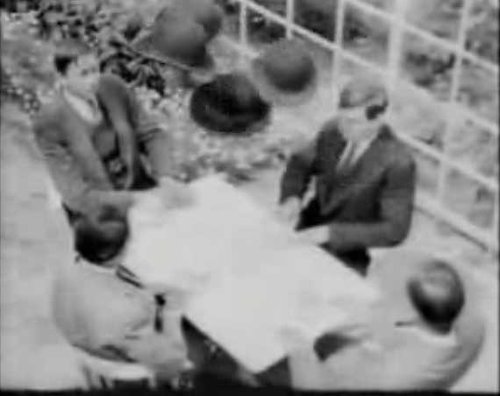Whenever humans design and make a useful thing they invariably expend a good deal of unnecessary and easily avoidable work on it which contributes nothing to its usefulness. Look, for instance, at the ceiling. It is flat. It would have been easier not to have made it flat. Its being flat does not make you any warmer or the room about you any quieter, nor yet does it make the house any cheaper; far from it. Since there is a snobbism in these things flattening a ceiling is called workmanship, or mere craftsmanship; while painting gods on it or putting knobs on it is called art or design. But all these activities: ‘workmanship,’ ‘design for appearance,’ ‘decoration,’ ‘ornament,’ ‘applied art,’ ‘embellishment,’ or what you will are part of the same pattern of behavior which all men at all times and places have followed: doing useless work on useful things. If we did not behave after this pattern our life would indeed by poor, nasty and brutish. Furniture designer and theorist David Pye, from The Nature of Aesthetics and Design. Quoted in Julie Lasky’s excellent post on Design Observer, Superbeauty.
Tag: theory
-
Whenever Humans Design and Make a Useful Thing
-
Hito Steyerl: In Defense of the Poor Image

The poor image is a copy in motion. Its quality is bad, its resolution substandard. As it accelerates, it deteriorates. It is a ghost of an image, a preview, a thumbnail, an errant idea, an itinerant image distributed for free, squeezed through slow digital connections, compressed, reproduced, ripped, remixed, as well as copied and pasted into other channels of distribution.
[…]
At present, there are at least twenty torrents of Chris Marker’s film essays available online. If you want a retrospective, you can have it. But the economy of poor images is about more than just downloads: you can keep the files, watch them again, even reedit or improve them if you think it necessary. And the results circulate. Blurred AVI files of half-forgotten masterpieces are exchanged on semi-secret P2P platforms. Clandestine cell-phone videos smuggled out of museums are broadcast on YouTube. DVDs of artists’ viewing copies are bartered.3 Many works of avant-garde, essayistic, and non-commercial cinema have been resurrected as poor images. Whether they like it or not.
– Excerpted from Hito Steyerl’s piece in e-flux journal #10
(Via Rhizome)
-
AAAARG.ORG
A ‘conversational’ collection of academic theory and discourse on arts, aesthetics, architecture (along with other non-alliterative disicipines), a user-contributed journal. Who needs grad school?
-
Comenius Begins His Story with a Pilgrim Who Is
Comenius begins his story with a pilgrim who is given mystic spectacles. But the lenses are cursed, ground by Illusion, rims hammered by Custom. Optical gimmicks were pervasive in many churches and theaters by 1622. Perspective could be accelerated or decelerated by tilting floors, narrowing walls, adding a deep focal point. Special effects were featured on ceilings: trompe l’oeil, accelerated perspective, anamorphosis – to induce a moment of wonder – a “vertigo” when the lid of a building simply dissolved. To many, these phantasms were progress, practical advances. But to Comenius, they might be the serpent’s eye.
Indeed in Labyrinth of the World, the spectacles distort God’s nature. To quote Shakespeare, the are “almost the natural man … [but] Dishonour traffics with man’s nature.” They are a prosthesis upon the eye, as McLuhan would say. To Comenius, they are an evil, not a cheerful global village. They make true distances vanish; ugly turns beautiful; black becomes white. However, luckily for Comenius’s pilgrim, these demonic spectacles do not fit properly. He can sneak looks below the rim, see the human labyrinth as it really is. If this were film, I would call what the pilgrim finds beneath his spectaceds Baroque noir, the town with no soul.
Norman M. Klein, in Scripted Spaces and the Illusion of Power, 1550-1780. From The Vatican to Vegas, 2004 p112. Describing a story from Comenius’s The Labyrinth of the World.
